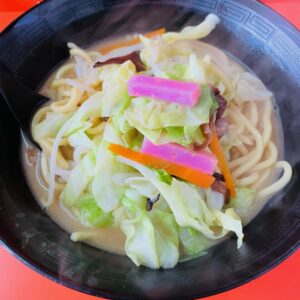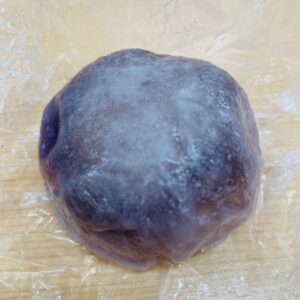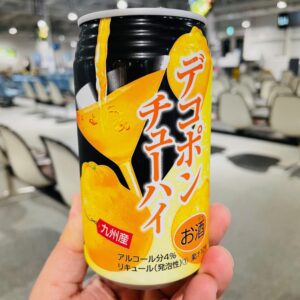May itinerary in Japan Day 3 (Kumamoto Meal edition)
(Thursday, May 19)
Table of Contents
1. Amakusa Champon Chiran
I had brunch at Amakusa Champon Chiran near Misumi Station on 19 May. Amakusa Champon is one of Japan’s “Three Great Champons”, along with Nagasaki Champon and Obama Champon. I am ashamed to say that I only knew Nagasaki chanpon. Obama Champon was developed in Obama Onsen (Obama-cho, Unzen City) in Nagasaki Prefecture. If we look up “Three Great Champons”, Tobata chanpon (Tobata Ward, Kitakyushu City, Fukuoka Prefecture) may be mentioned instead of Obama chanpon.
Amakusa Champon is said to have started as an adaptation of Nagasaki chanpon techniques with the addition of Amakusa ingredients. Chiran was opened two years ago by the owner and his wife, who had been in business for many years in Nara Prefecture. Misumi is near owner’s wife home town, Amakusa. This ramen shop was very popular in Nara Prefecture and won the Grand Prix in the variety category of the ramen magazine “Ultimate Ramen 2020”. According to the owner, regular customers of Chiran in Nara sometimes come to Misumi Town, Uki City, to eat there because they cannot forget the taste. The owner and his wife’s friendly personality is probably the secret behind the restaurant’s popularity.

I ordered fried rice (Yen 600) and Amakusa champon with Daioh meat (Yen 900). Daioh meat is the meat of the Amakusa Daioh, one of the largest homebred chickens in Japan. The largest male chicken is 90 cm tall and weighs approximately 7 kg. By the way, broilers weigh around 2 kg. The meat of the Amakusa Daioh is characterised by its juiciness and elasticity, which is neither too hard nor too soft.

The Amakusa Champon at Chiran is characterised by the fact that it contains no seafood at all. The soup was also thick with chicken broth. This thick soup has an addictive taste that I still can’t forget. This ramen shop is located in a fairly small town, Misumi Town, Uki City, but it is certainly a famous restaurant.
2. HERO KAI Kumamoto Station
I had dinner at HERO KAI, Kumamoto Station Branch, Higo Yokamon Market, Kumamoto Station. I ordered Ichimonji no guruguru (Yen 530), Karashi-renkon : spicy lotus root (Yen 650), Bakudan (Yen 530), vinegared thread Mozuku : Nemacystus decipiens (Yen 530) and a plate of horse sashimi (Yen 1,800). HERO KAI is a izakaya where the president, a native of Ushibuka, Amakusa Islands, Kumamoto Prefecture, serves seafood from Ushibuka and local Kumamoto cuisine. It is a very convenient izakaya for tourists as we can enjoy a variety of seafood and local cuisine.
Horse sashimi has been selected as one of the “100 best local dishes” by the Ministry of Agriculture, Forestry and Fisheries. Kumamoto Prefecture produces the largest amount of horse meat in Japan. Horse sashimi from Kumamoto Prefecture is a famous dish that everyone knows and needs no explanation. The horse sashimi I ate at HERO KAI Kumamoto Station Branch was also very tasty.

“Ichimonji no guruguru” has been selected by the Ministry of Agriculture, Forestry and Fisheries as one of Kumamoto Prefecture’s “Our Regional Cuisines”. Ichimonji is another name for the Japanese common green onion. Guruguru is named after the boiled white root of Ichimonji with the green onion wrapped around the shaft. It is eaten with vinegared miso or spicy miso. I had it for the first time when I travelled to Kumamoto last year and enjoyed it so much that I ordered it again this time. It was so good that I decided to order it every time I come to Kumamoto.

“Karashi-renkon : Spicy lotus root” has also been selected by the Ministry of Agriculture, Forestry and Fisheries as one of the “100 best local dishes“. Unlike ‘Ichimonji-no-guruguru’, “Karashi-renkon” is a nationally renowned local dish of Kumamoto Prefecture. The origin of “Karashi-renkon” can be traced back to Tadatoshi Hosokawa, the first lord of the Kumamoto Domain in Higo Province. The dish was first presented to Tadatoshi Hosokawa, who was sickly and weak, in order to nourish him, by filling the holes in the lotus root with barley miso mixed with Japanese spicy powder, battering it and deep frying it. As it was a dish for the lord, it was a secret recipe until the end of the Edo period.
Ibaraki Prefecture ranks first in terms of lotus root production, with an overwhelming 52% share (in 2021). On the other hand, Kumamoto Prefecture ranks 6th in the country in terms of lotus root production, with a share of only 3.6%.

“Bakudan” is a speciality of the Amakusa region. A whole boiled egg is placed inside a fish paste. It was a great snack with beer.

“The Vinegared Ito-mozuku” was a refreshing and tasty dish using “Ito-mozuku” from Ushibuka. Incidentally, the “Thick mozuku” that is often caught in Okinawa is a type of mozuku called “Okinawa mozuku”, which is a member of the brown algae family, Pseudochromis nipponica. On the other hand, “Ito-mozuku” is a type of mozuku belonging to the brown algae family Mozuku. “Ito-mozuku” has a soft and smooth texture with a slimy component around the fibres.

3. Ramen Kusunoki
After dinner at HERO KAI, I headed for Kumamoto Airport. The limousine buses I used were as follows.
Depart Kumamoto Ekimae at 18:25, Limousine Bus “bound for Kumamoto Airport”, arrive at Kumamoto Airport at 19:29, Fare Yen 800
Kumamoto Airport has the disadvantage that it can take up to an hour to get to Kumamoto Station. It is one of the most time-consuming airports in Japan to get to the main station. The difference is obvious when compared to Fukuoka Airport in Kyushu, which is only a five-minute underground ride to Hakata Station, a major train station.
Kumamoto Airport is currently undergoing renovation work and the new passenger terminal building is scheduled to open in spring 2023. Therefore, the dining facilities are also temporary.
For my last meal in Kumamoto, I bought “Ikinari dago” at Kumamoto Souvenirs Shunsaikan and ate it with “Taipien” from Ramen Kusunoki.
The word “Ikinari” in “Ikinari dago” is a Kumamoto dialect word meaning “easy, quick and immediate”. “Dago” is also the Kumamoto dialect word for dango (dumpling). The sweetness of the sweet potato, the sweetness of the red bean paste and the saltiness of the dough made for a very tasty dumpling. “Ikinari dago” has been selected by the Ministry of Agriculture, Forestry and Fisheries as one of the “100 best local dishes“.

“Taipien” was originally a local dish of Fuzhou, Fujian Province, China. It is a noodle dish consisting of vermicelli soup topped with stir-fried prawns, squid, pork, Chinese cabbage, etc., and a fried egg. “Taipien” in Kumamoto is said to have been introduced to Japan by overseas Chinese merchants during the Meiji era. “Taipien” has been selected by the Ministry of Agriculture, Forestry and Fisheries as a representative dish of Kumamoto Prefecture in its “Local dishes loved by the nation“.
The “Taipien” at Ramen Kusunoki was tasty enough to make it hard to believe that it was eaten at the airport. However, it was not as good as the tasty “Taipien” I was impressed by at Kourantei in Kumamoto City during my trip to Kumamoto last year. Of course, Kourantei is a famous restaurant, so it is inevitable that Ramen Kusunoki is inferior to Kourantei.

After eating “Ikinari dago” and “Taipien”, I headed for Haneda Airport with Dekopon Chuhai on the plane. Dekopon was first produced in the town of Shiranui (now Uki City), where I stayed, as ‘Shiranui’, a hybrid of Kiyomi and Ponkan. Of the Shiranui variety, those with a sugar content of 13 degrees or higher were commercialised and shipped under the name “Dekopon”. Dekopon Chuhai is marketed by the Kumamoto Prefecture Fruit Agricultural Cooperative Federation (Kumamoto Fruit Federation), which holds the trademark “Dekopon”.

The flights I boarded to Haneda Airport were as follows
Depart Kumamoto Airport at 20:30, ANA650, arrive at Haneda Airport at 22:15
This trip was also very enjoyable. I was glad to be able to visit areas I had never been to before, such as Hitoyoshi City, Yatsushiro City, Uki City and Arao City in Kumamoto prefecture. All were very attractive places.
Note: The transport departure and arrival times, fares, entrance fees and meal prices shown in the text are correct at the time of writing the BLOG. They are subject to change in the future, so please check for yourself when you travel.
